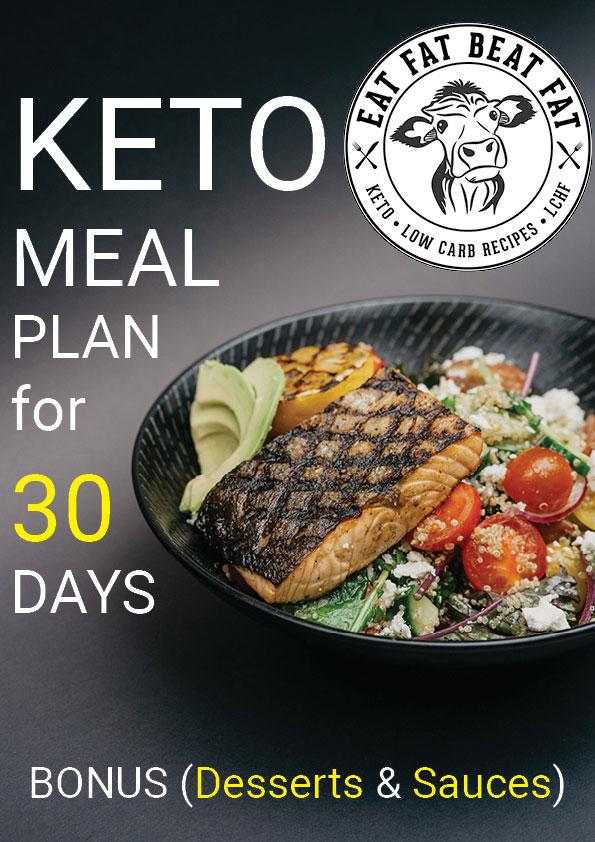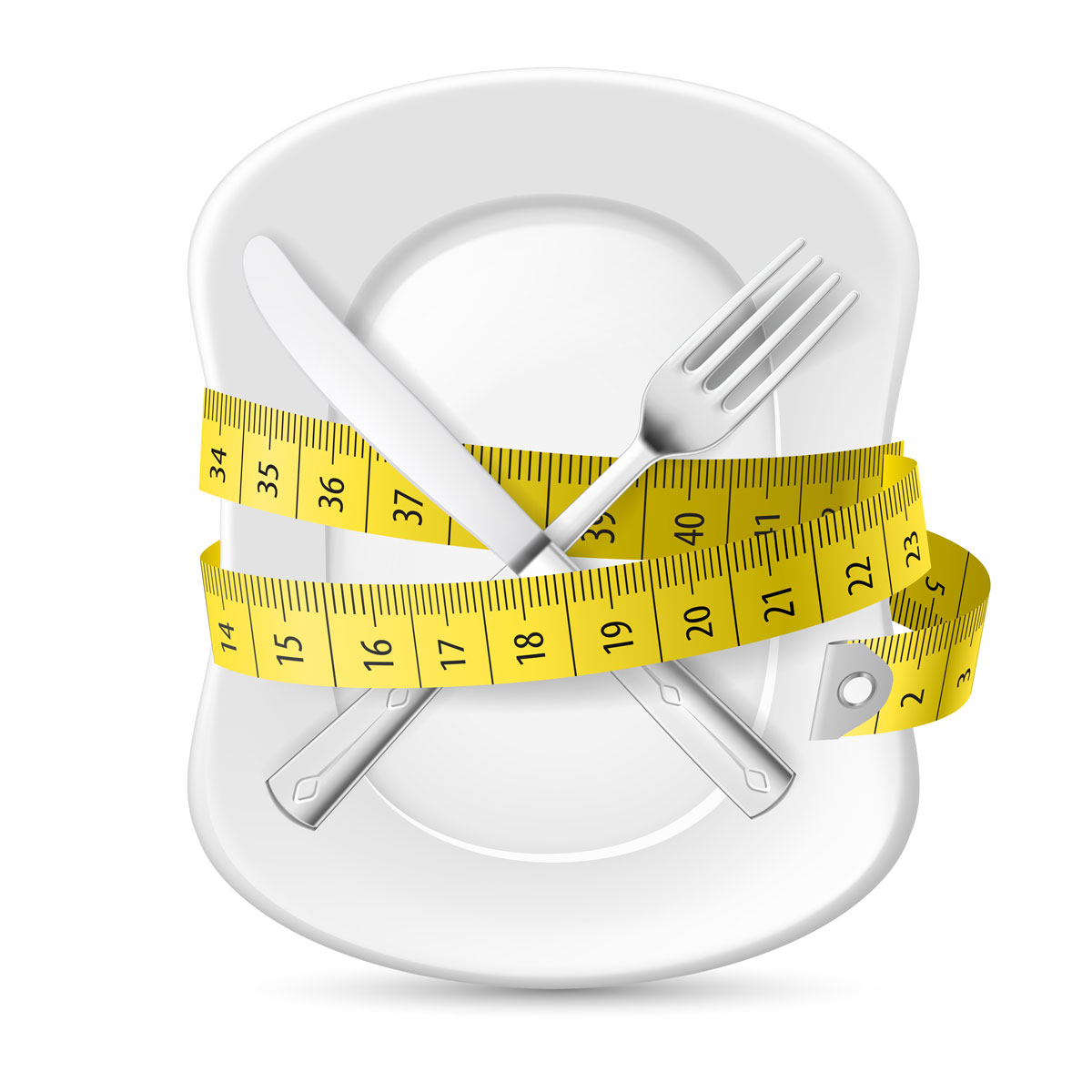You’ve now successfully learned all there is to know about intermittent fasting. We have the knowledge and understanding necessary to start an intermittent fasting practice safely thanks to recent scientific discoveries and the rich cultural past. This is not only a straightforward shift in the things we eat and when we eat them, as we have covered throughout the blog. This technique has the power to completely alter not only our life but also the surroundings.
Women have faced the most hardship on the global stage due to cultural pressure to appear a certain way or eat a specific way. Women used to be the target of blame and derision in the not-so-distant past. However, they are now assuming leadership positions in social reform and order. As with every other area of women’s life, our diets and opinions on food play a significant role in this drama. We influence the world around us by introducing new eating practices and serving as convincing examples of healthier ways to care for our bodies. By encouraging others to develop a positive self-image, we can transform the world. By using locally supplied goods and services, reducing our environmental effect, and making fewer contributions to corporations, we can transform the world. By altering who we are and how we interact with the world, we can change it.
Now that we have a clear understanding of the big picture and have learned everything there is to know about intermittent fasting from this blog, we can discover an approach that works for us. An example of a common intermittent fasting schedule is shown below. We are going to provide you a seven-day fasting schedule. This manual is merely that manual. Although it is not required that you adhere to this exactly, we have left it open to customization and made it a straightforward routine that serves as a solid starting point for a fully developed individualized practice that is perfect for your preferred way of life.
We will use the well-liked 5:2 method. As we recall, this method calls for five days of regular eating and two days of calorie restriction (less than 500 calories per day). For the purposes of this discussion, let’s imagine that the person using this manual is a total beginner who also wants to lose weight. Their diet, which mostly relies on processed foods and fast food restaurants, is not thought to be healthy.
The initial
So you’ve made the conscious decision to alter your diet and start an intermittent fasting schedule. Although you’ve never fasted, you feel confident moving forward and taking action since you’ve educated yourself. Consider the idea that this transition has already started in some ways because you have been thinking about it so frequently. You have been mentally preparing yourself by picturing the effects of a new intermittent fasting schedule as well as your intended outcomes. You can see your objectives, and you’re prepared to reach them.
Your intellect might be open and willing, but sadly, years of a poor diet and way of life have taken their toll. You don’t feel confident beginning a fast right away. You must therefore get your body ready for a coming week of fasting. Describe your typical diet and portion proportions for a week in writing. This can be a precise representation of your daily dietary intake or a rough estimate. Examine this graph to determine the imbalances in your diet. Do you consume food at the same time every day? Do you eat just before bed or at a late hour? Do you consume a lot of processed foods? Learn all about your harmful behaviors so that you can more effectively overcome them in the future.
You realize that your diet needs to be better; this is definitely easier said than done. Create a seven-day chart, but with an improved diet, showing what your ideal healthy meals might entail. Choose a diet as a starting point from this blog. We will follow the Keto diet for one week prior to the week that we start practicing intermittent fasting for this particular guide, with two keto vegetarian days mixed in. This will allow us to gradually adjust to the new dietary adjustments without shocking our bodies or minds, perhaps preventing scary feelings of defeat or insecurity.
Since this particular tutorial will begin on a Sunday, you should have the necessary groceries prepared and ready to go by Saturday. When first starting out, meal planning is helpful, and the grocery list may resemble this:
- Acai berries
- Olives
- Zucchini
- Spinach
- Red Onion
- Tomatillos
- Broccoli
- Cucumber
- Carrot
- Apples
- Berries
- Cheese made from goats
- Greek yogurt
- Nuts, almonds
- Seeds from sunflowers
- Legumes garbanzo
- Black beans
- Rosemary
- Oregano
- Basil
- Extra Virgin Olive Oil
- Salmon
- Tuna
- Chicken
- Red Wine
This list is a representative one, but you should pick things you enjoy. Wine is obviously an optional addition.
We will now think of a detailed menu for this practice week. We’ve listed the best choices for breakfast, lunch, supper, and snacks below. These meals can be prepared on a daily basis or in advance using the techniques described earlier in the blog.
The traditional breakfast on the Keto diet is light, with zero sweets and no carbohydrates. Every morning, drink a lot of water and, if you like, coffee or tea. Given that it sets the tone for the day and gives instant energy that can be used right away, breakfast is regarded as one of the most significant meals of the day. Here are a few possibilities:
- Jam(no sugar)-topped Keto toast
- Fruit in Your Yogurt
- Smoothie with fruit and vegetables, nuts, or seeds
- Coffee or tea, sweetened or unsweetened
We’ll locate another small lunch to eat for lunch. The best time of day for a quick energy boost is in the middle of the day. Tea is appropriate in the middle of the day, and smoothies are excellent for a quick lunch. To prevent restlessness later in the evening, try to select beverages without caffeine. Among the top lunch choices are:
- Salad and tuna sandwich
- Avocado and Tortilla Vegetable Wrap
- Tortillas with chicken in a wrap
- Chicken and vegetable soup with keto crackers
The optimal time for large meals and higher calorie intake is often considered to be in the evening. This lunch is often made with a variety of dishes, balanced nutrients, and a casual, loving touch. Hearty salads as an appetizer and fresh whole grain bread go nicely with any keto meal. Water or that glass of red wine go well with this dinner. Suitable menu suggestions include:
– Broccoli that have been steamed with seared salmon.
– Keto pasta with vegetables and tomato sauce (lasagna, penne).
– Grilled lamb served with steamed vegetables.
– Homemade pizza with vegetables and goat cheese.
– Grilled chicken salad with a ton of assorted vegetables.
For those just beginning a new diet, the much-desired sweetness of sweets and snacks in between meals can be a lifesaver. When picking these snacks, use caution and avoid skipping dessert. Among the healthiest options are;
– A fruit salad
– Fruit keto bread, muffins, and other baked items
– Salted or unsalted nuts
– Fruit-flavored yogurt
– Apples and natural peanut butter, either straight up.
– Vegetables with a mild dressing for dipping
You should be able to finish a week of healthy eating using these suggestions to get ready for your new intermittent fasting schedule. Know how your body reacts to novel foods and schedule. Keep track of any pronounced emotions or changes in mood or energy. Don’t start out with specific expectations because everyone is different. Accept the way things are and take pride in your accomplishments. Both your body and this path are uniquely yours. Create your own version of this practice and start developing your new connection with food.
So your week of preparation is almost over. Do you feel better prepared to start an intermittent fasting schedule now? Is your body making a good response? Are you continuing to have confidence and a good outlook? As the fasting week draws near, it is imperative to have answers to these issues. Make the essential decisions by paying close attention to your body. While some people might require an additional week of preparation with the new diet, others might be all set. Choose whichever option is best for your body, mind, and soul.
We need to think about what our meals will look like for the following week, assuming that you are ready to start the new intermittent fasting practice as planned. Will we continue to follow the recently formed Keto food pattern? Will a cheat day be permitted? Are we confident about sticking to the original schedule of two vegetarian days? Before the weekend, ask yourself these questions.
Additionally, we need to make sure that we have enough food for the following week. As we are in the middle of the fast, having the meals planned or even prepared can help manage our week. Knowing what meal will be served next also helps clear mental space, giving us more time to focus on ourselves rather than what and how to prepare food. We should have our food stored by the Saturday before the start of your fasting week, and we should at the very least have some meals planned out or even cooked. As Saturday night draws near, picture your ideal self, reflect on your former way of life, and consider all the extra weight you’ll lose, both physically and figuratively. On Sunday when you wake up, your new intermittent fasting routine will have started. But there are also other aspects to consider.
We have opted to fast using the 5:2 method. We must decide which two days we will fast on as well as the restrictions for those days as this necessitates caloric restriction on two of those days. We’ll pick days that aren’t back-to-back for this guide and keep the daily calorie intake to under 500. Some people may feel comfortable fasting entirely these days and consuming no calories, but for the purposes of this beginner’s guidance, let’s keep to the maximum 500 calories permitted per day. We’ve decided to limit our calories on Tuesday and Thursday as well for our guidance. We’ll use ingredients from this list and adhere to the above-described Keto diet plan. We are picking Monday and Wednesday as the days for the vegetarian lunches.
You’ve selected your fast days, got your groceries, and are mentally prepared. I got ready to begin our new intermittent fasting schedule. The following plan will serve as a day-by-day reference with suggestions for modifications if necessary:
Sunday
Your first day comes, and you awake feeling completely ready. We have decided that Sunday is a suitable first day to get used to the new routine. This morning, think about your future week, but otherwise, approach it like every other morning. Water, coffee or tea with or without sugar, and a light breakfast of a keto bagel with goat cheese and a side of green apple are all appropriate in this situation. This is a fresh start, and you’re prepared.
As midday approaches, we once more borrow a recipe from the Keto cook-blog and serve a short dessert of yogurt along with a light lunch of chicken salad on whole keto bread. Consider drinking lots of water or a smoothie if you’re still hungry.
As dinnertime arrives, our largely unhurried Sunday comes to an end. We’ll have a sizable salad with grilled chicken and lots of tomato and onion for supper to keep things light. This healthy meal can be served with low-fat keto ice cream, a big evening snack, or a bowl of fruit.
Consider how your body is feeling after such a mild day of eating when you lie down to rest. Are we prepared for tomorrow to be a plant-based day? Are we also anticipating our fasting days? Although the time may seem to drag a little while we wait for the new lifestyle days, it will eventually become a regular part of our daily routine.
Monday
Our first day of the work week is today. This day will set the tone for the upcoming week and the weeks that will follow with a devoted intermittent fasting practice, assuming a standard nine to five Monday through Friday. The lunch should preferably be light to enable our bodies adjust to tomorrow’s day of limited calories.
All of the meals today are plant-based because it is a vegetarian day. Although we will still be able to eat dairy and eggs, most of the meals will be oriented around vegetables. Oatmeal with berries and a sweetener makes up breakfast. Add seeds or ground nuts for more protein. A plenty of water, as well as coffee and tea, if preferred.
A special mention about caffeinated beverages has to be added here. Many people are unwilling to end their relationship with coffee or tea because they enjoy it so much. While this is not a concern, we should be aware that caffeine’s effects can be significantly stronger or cause stomach trouble when consumed on an empty stomach. On days when calories are limited, unsweetened coffee and tea are OK but should be avoided due to their intensified effects.
As noon draws near, we eat our first plant-based meal. A sizable spinach salad with a lot of vegetables and your chosen dressing will make up this light meal. A fruit smoothie with plant-based ketogenic protein powder, will go with that. If you feel like you need a little extra food, choose an low carb organic granola bar or a natural peanut butter sandwich on keto bread.
As nighttime falls, you might be feeling quite hungry due to the modest portions of your plant-based meals. At dinnertime, you can add a little more heft. You could be thinking about how close your first day of intermittent fasting is now. You might think that this dinner will be your last for a very long time. However, you can rest assured that the upcoming morning won’t be as challenging as you imagine. As you take your final bite before the next intake window, concentrate on the food at hand and savor it.
This evening’s dinner will be a vegetarian stir-fry made with keto rice, tofu that has been fried, and vegetables including broccoli, carrots, zucchini, and onion. You may stir in a scrambled egg for extra protein. You might want to treat yourself to dessert this evening, but this is your diet, so you make the decisions. Many people online have severe restrictions for treats, especially before a fast day. After eating your midnight snack, go to bed.
Tuesday
We have reached the first day of the fast. This day, we’re limiting our caloric intake to under 500. You can spread out these calories throughout the day. Really, it’s up to you. You will only drink water and eat zero calories for the sake of this instruction this morning. It’s acceptable to have some tea or coffee, but without sugar. The addition of cream just adds 5 calories, making it tolerable if necessary. After filling up on water, continue with your day.
As noon approaches, you are undoubtedly still feeling the affects of your fast. It’s normal for newcomers to feel lighter and perhaps a little lethargic at first. Pay close attention to your body’s signals. Save a low carb granola bar or other portable snack for unexpected situations. There is no shame in taking a snack if you are dizzy or uneasy. Safety is crucial because this is your body.
If you’re feeling up to it, you can skip lunch. If you decide to skip, the structure of this is rather similar to the 16:8 manner. You will need meals with a caloric value of 2,000 for this tutorial. There isn’t much food here. It can be categorized as a snack-sized portion. We will be eating avocado toast today along with two slices of keto bread. To taste, add oil, salt, and pepper. Take in a lot of water.
You could start to feel particularly hungry as dinnertime draws near. With 300 calories, this supper will only have a marginally higher caloric consumption than lunch. We’ll make chicken quesadillas and reintroduce meat to the diet. Lightly prepare with salsa, green pepper, and cheese. Water to accompany, maybe with some lemon flavoring added.
You’ve finished your first day of fasting. Spend some time this evening reflecting about your feelings. Do you feel at all uneasy? Do you feel fulfilled and satisfied? Are you anticipating the upcoming fast day? Examine your past experiences and, as always, pay attention to what your body is telling you.
Wednesday
The second and last vegetarian day of our seven-day plan is today. Although we don’t restrict calories today, the meals will be light and simple to help you transition to tomorrow’s day of calorie restriction. We’ll have two eggs and a side of toast for breakfast. To make a smoothie or fruit addition, we might have a mid-morning snack. There will be plenty of water and, if desired, coffee and tea.
We’ll eat a substantial kale and spinach salad with walnuts and lots of vegetables for lunch. This afternoon, a large side of low-carb fruit and a trail mix will help you feel full. Hydration with water, then we can continue with our day.
Another tipping moment occurs as you get closer to dinner. Tomorrow is your second day of calorie restriction, so let’s make this dinner worthwhile. Falafel in a keto pita with spinach, with pickle and tomato. As evening draws near, we pay close attention to our body once more, listening closely for any favorable or unfavorable reactions. Drink a lot of water and relax well.
Thursday
We have started our second day of calorie restriction, marking the halfway point of our week. This day will be handled pretty similarly to Tuesday. Breakfast will consist of plenty of water, unsweetened tea, or coffee, and no calories. Watch how your body responds to not having enough calories this morning.
Again, for our needs, a lunch that is about the size of a snack is perfect. A modest salad with lots of vegetables and a mild dressing provides a larger serving with fewer calories. Keep this meal’s calories at around 200, and drink plenty of water.
We can create a lean and satisfying plant-based supper as dusk draws near. Prepare some fried zucchini cakes with garlic and onion and serve them with a simple salad. Drink a lot of water before night, and review how our body is responding to our new nutrition plan. Congratulations on finishing your second fast day; now, relax.
Friday
The first weekend of your new existence is this weekend. You deserve to eat whatever you want from your regular diet on this very special Friday morning. In this guide, we’ll maintain the format from our practice week and enjoy a day of meals with a low-carb flair. We’ll have keto bread with avocado and one egg for breakfast. Enjoy some coffee, tea, as well as lots of water as always.
A grilled chicken sandwich will serve as lunch, along with keto crackers and cheese as an appetizer or side dish. Water or tea are acceptable drinks. How does your body respond to reintroducing the “normal” diet and portion? Do you eat more quickly now? Are you eager to organize your upcoming week?
We have our first weekend following a busy week ahead of us as you go home from work or your Friday errands. Garlic zucchini bread, a salad, and keto spaghetti with tomato sauce can be served for dinner. If you want, perhaps sip some wine. Think over the previous week as you prepare to go to bed. Would you rate it as a success? Are you certain that you can maintain this way of life? What adjustments could you make for the upcoming week? Your responses to these inquiries, though, might make you want to congratulate yourself for starting down the road to a new life.
Saturday
What is the schedule for Saturday? As you make plans for the coming week, you might be tempted to treat it like a cheat day and do anything you want. Whatever you decide, your first week of IF has already been successfully accomplished. You can move your practice anyplace you wish from here.
Commentary on Cheat Days
Cheat days have been mentioned several times in this keto wiki blog. Cheat days pretty much go without saying; you get to indulge, eat whatever you want, and cheat. Although we intend for this blog to discourage this practice in many fitness communities, we look forward to cheat days with joy. There is nothing improper about treating yourself to a stress-free day of pleasure. Spend the day with friends going out to eat or enjoying a few drinks. You own the day.
Having said that, we must respect cheat day for what it is. A cheat day is both a day where you get to indulge and a test of your self-control and commitment. Can you successfully indulge in your favorite meals for a day and then get back on track the next? Although these days are enjoyable, their termination might be sad.
Therefore, when we are attempting to have a healthy and joyful relationship with food, cheat days should be welcomed. However, we must make the most of cheat days. Set goals, and when you achieve them, give yourself permission for a cheat day. Alternately, set specific cheat days in advance, such as the third Sunday of the month. Some individuals could desire ad hoc cheat days. Any cheat days you want to take, however, should be used responsibly and be a part of the respectful relationship we are developing with food and our bodies.








